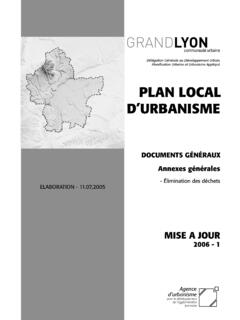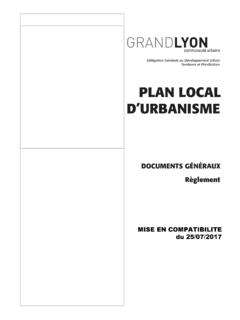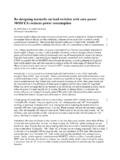Transcription of A BRIEF GUIDE TO PIANO FOURTH VOICINGS
1 Jason Lyon 2006-7, BRIEF GUIDE TO PIANO FOURTH VOICINGSINTRODUCTIONThis article is intended to give you a basic command of the most useful PIANO chords voicedin fourths (also known as quartal VOICINGS ). This sound is heard in the playing of McCoyTyner, Chick Corea and just about every pianist that has come after them. It s also used VOICINGS make for a much more open sound than the more traditional VOICINGS basedon thirds. The left-hand versions are often used to accompany a right-hand solo (frequentlyusing pentatonic and hexatonic scales), but they also have a lot of applications in comping,both in modal tunes and when playing s especially useful to practise these VOICINGS , as they allow you to see keys and chords in adifferent light.
2 Most people find it quite tricky to read/play FOURTH intervals at BASIC II-V-I IN FOURTHSAs modern as they may sound, the basic FOURTH VOICINGS are derived from the standardrootless left-hand VOICINGS most jazz pianists are already familiar with. The two inversions ofthese voicing sets are as follows: Dm7 G7 C Dm7 G7 C Removing a middle note from these VOICINGS is a popular choice, as it creates a lesscongested sound. It also converts the second two VOICINGS into stacks of diatonic fourths(diatonic just means from the key could be perfect or augmented, doesn t matter ): Dm7 G7 C Dm7 G7 C There s no reason why you shouldn t play these VOICINGS as is, but it s also possible to adjustthe Dm7 VOICINGS to convert the whole batch into fourths: Dm7 G7 C Dm7 G7 C Jason Lyon 2006-7, note here on range.
3 It s usually best to keep these VOICINGS roughly within an octave ofmiddle C. Much lower and they re muddy, much higher and they re thin. To give you moreoptions you can invert them, for instance: Dm72. FULL TWO-HANDED FOURTH VOICINGST here are ways of building bigger chords in fourths across the two hands, but you have totake care when constructing them if you want to clearly express the harmony. What followsare the choices that give the most possible diatonic fourths while steering clear of the avoid notes and still giving the strongest possible representation of the chord. (The avoid notesare the 4ths of G7 and C.)On the II chord (Dm7), build five consecutive fourths up from the 5th:Note that this voicing contains the root (D), 3rd (F), 5th (A) and 7th (C).
4 Extending it eitherabove or below tends to unbalance the sense of D the V chord (G7), build five or six consecutive fourths up from the 7th:This can t be extended further either way, because that would mean playing the avoid note(the 4th, C). Note that this is the same as thing as a classic left-hand voicing with the secondfrom bottom tone (A) raised an octave and the 5th (D) and root (G) added on top of the wholelot. Jason Lyon 2006-7, the I chord (C ), build five consecutive fourths up from the 3rd:Note that this is the same thing as a classic left-hand voicing with the second from bottomtone (G) raised an octave and the root (C) added on top.
5 Note also that this is the same asthe II voicing for Am7 (the relative minor of C). The Dm7 voicing we looked at above is,likewise, the same as the voicing for F . Being aware of your relative major-minor pairingsallows you to learn two things at VOICINGS are fuller, so can work satisfactorily further up the keyboard than the left-handfourths we looked at earlier. But of course you can invert them, with the proviso that you d bedisturbing the pure sound of stacked fourths. Oh, and the V and I VOICINGS move nicely inparallel together. The II voicing is a bit more problematic, but you can use inversions toachieve smooth voice leading across the whole is just a BRIEF roundup of the fullest sounds over each chord quality (hint: there are alsopossibilities for F +4 the Lydian mode of the key and Gsus the Mixolydian mode).
6 Youshould also explore stacks of four fourths over the different chords. Remember, ambiguity isnot necessarily a bad thing in music. This is particularly the case in a modal other possibility is worth mentioning here the tonic minor chord. Building five fourths upfrom the 3rd of a minor chord (here Dm) gives you the following (which is the same as the G7voicing we looked at earlier):This reads (bottom to top) minor 3rd, 6th, 9th, 5th and root. Minor 3rd, 6th and 9th in combinationis a great way of representing a tonic minor chord. So this voicing will work well over a Dmwhich is part of a E A7alt Dm progression, rather than Dm7 G7 C .3. THE RIDE VOICINGSBack to left-hand VOICINGS .
7 There are two problems with these VOICINGS both are concernedwith , since chord tones are built in thirds, a three-note voicing built in fourths will only evercontain two chord tones. Second, many stacks of three fourths often don t contain the solution to the first problem is to use FOURTH chords in pairs (or more), seesawing betweenthem this allows you to more fully represent the chord tones. For the sake of smooth Jason Lyon 2006-7, it s best to choose FOURTH stacks a tone apart. The solution to the second problem is toplay a low root and 5th or root and octave, then jump up and follow it with one or more fourthchords. Put the two solutions together and you have the basis of the style McCoy Tyner isfamous for: Dm7 Another little point to mention here: if the chord quality we re dealing with has a perfect 5ththen either a low root and 5th or an octave will sound good.
8 If the chord doesn t contain aperfect 5th (on a half-diminished or altered chord, for instance) then we d usually choose a lowoctave. An altered 5th played this low tends to muddy, rather than reinforce the , if you think about it, this solution to a very modern use of harmony has its roots ina very old PIANO style stride. As is so often the case, what seems at first glance likerevolution is actually used together in pairs or more, with or without the low root thump (which is used morein a modal context than in playing changes), these structures are known by some as rides presumably since the hand sort of rides up and down the keyboard.
9 Some pairs of fourthstacks work better than others in different chord IN MINORLet s start by looking at all the possibilities available over a Dm7 (II) chord: Dm7 You can work out which ones are going to sound best by doing a little maths and letting yourear GUIDE you. The maths part is simple: the combinations that work best are the ones thatcombine to give you the most strong chord I-II pairing is quite strong, combining root and 7th with 5th and root. The IV-V pairing iseven stronger, combining 7th and 3rd with 5th and root. Others contain varying combinations ofchord tones, but these two pairings seem to win out on the ear front, and are the most used: Jason Lyon 2006-7, Dm7We can connect these by using the FOURTH stack built on III.
10 But remember that this voicing ismore suggestive of tonic minor (Dm69) than a II chord (Dm7). This doesn t mean it can t beused over a Dm7, however, especially in combination with a a modal context, you have a lot more freedom to play any of the FOURTH stacks (especiallysince Dorian doesn't contain an "avoid note) but even so, these sets of rides can be seenas the important hinges in the IN MAJORLet s now look at which rides might suit a C chord: C Hmm. Problems already. Anything involving the 4th of the key (the avoid note) is out. Thereare a couple of possibilities:Now this may not look familiar but we ve come across these choices before, in a different how in minor, we found that the rides based on I-II and IV-V worked best inminor?














